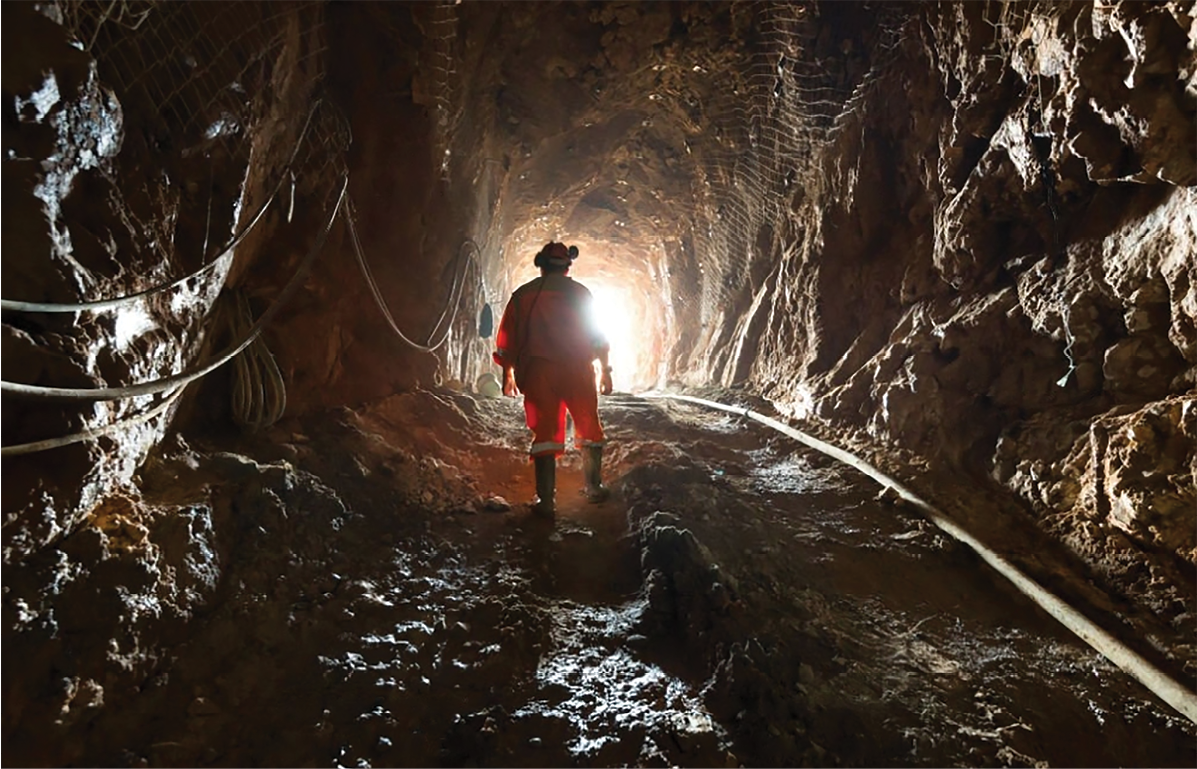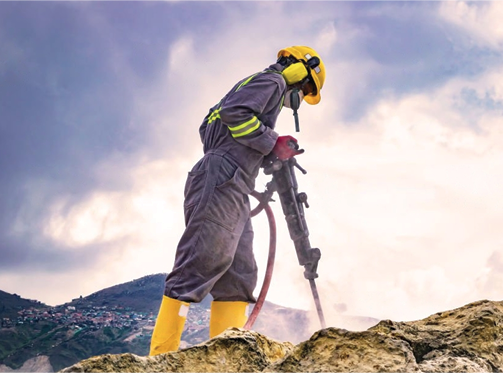With safety always at the top of the priority list for operations, a refresher on the topic to reinforce its importance can never hurt. Here is a top five list of the most prevalent hazards and five more methods for prevention.
By Steven John Cumper

In the United States, roughly 230,000 people work in the country’s 11,500 metal and nonmetal mines. Every year, dozens of deaths and hundreds of injuries affect these employees.
Although many improvements have been made to protect mining workers, there’s still more room for growth. Below are some of the most common occupation hazards affecting the mining industry, along with tips on mitigating them.
Whether they’re mining coal, gold, or anything in between, miners face specific risks that workers in other industries don’t. The following are some of the most significant occupational hazards to be aware of:
1. Coal dust and toxic chemical exposure
Miners experience consistent exposure to various chemicals and harmful substances. Coal dust is one of the most well-known substances that can harm mining employees.
Breathing in coal dust over an extended period can cause pneumoconiosis, also known as miner’s lung and black lung. Pneumoconiosis causes symptoms like breathlessness, scarred lung tissue, and respiratory issues like coughing, wheezing and more.
Harmful chemicals exposures of concern to miners include cyanide, sulfuric acid, nitric acid, heavy metals and solvents designed to separate minerals and ores.
2. Excessive noise exposure
With constant drilling and heavy machinery use, mines are inherently very noisy places. Many workers claim to get used to the noise and say that it doesn’t bother them; however, long-term exposure to loud noises can cause hearing damage over time.
The effects of hearing damage tend to come on gradually. Some hearing loss symptoms miners experience include ringing in the ears (known as tinnitus), trouble keeping up with conversations and difficulty hearing certain sounds or letters.
3. Whole-body vibration
Mining’s heavy machinery also contributes to whole-body vibration, or WBV. WBV can occur when someone spends a lot of time sitting on heavy machinery or standing while using it.
Whole-body vibration is particularly hazardous when it occurs on an uneven surface. Over time, WBV can contribute to various health conditions including impaired vision, poor digestion, musculoskeletal disorders, cardiovascular problems and reproductive difficulties in females.
4. Musculoskeletal injuries and disorders
In addition to being caused by whole-body vibration, musculoskeletal disorders like chronic back pain and osteoarthritis can also affect miners through other avenues. Some examples include injuries caused by trips, falls and heavy lifting. These injuries can occur suddenly or progressively as a result of repetitive heavy lifting or other types of repetitive strain.
5. Thermal stress
Another common risk for mining industry workers is exposure to hot and humid environments. A lack of airflow in mines (combined with heavy machinery use and increased temperatures) can cause the temperature to rise, even in cooler locations.
Prolonged exposure to heat and humidity, especially without proper hydration, can cause thermal stress, also known as heat stress. Thermal stress can subsequently lead to fatigue, confusion and slurred speech. In more severe cases, people may have seizures, fall into a coma, or even die if they don’t get adequate treatment.

HOW TO MITIGATE MINING HAZARDS
While the industry is inherently dangerous, employers can also take many steps to protect team members and prevent injuries as well as fatalities. Here are five practical solutions to mitigate mining hazards:
1. Offer ongoing training and education
Thorough and ongoing education is critical to keeping employees safe on the job (especially in dangerous industries like mining).
New miners should receive sufficient training regarding the use of equipment, proper attire and taking regular breaks so they know how to reduce their injury and illness risk. Older employees should also receive regular reminders, too. It’s easy to get complacent when you’ve worked in a field for a long time, but proper training applies to everyone.
2. Provide proper protective gear
Miners can use many different types of protective gear to keep them safe on the job, including hard hats, safety glasses, masks and respirators; earplugs; reflective clothing; steel-toed or metatarsal boots; and gloves.
Protective clothing should be climate-appropriate, too. For example, miners who are at risk of heat stress should have access to durable but breathable clothing to reduce their risk of overheating.
3. Make first aid materials accessible
Injuries and accidents happen, even in the most well-run workplaces. That’s why employees should have easy access to first aid materials.
Along with standard first aid supplies, such as bandages and alcohol wipes, miners should also have easy access to things like splints and an automated external defibrillator (AED). These devices can save lives, especially while waiting for emergency medical personnel to arrive.
4. Allow for regular breaks
Many health and safety hazards, from musculoskeletal injuries to heat stress, can be prevented by allowing employees to take regular breaks. When allowed to step away from the work site, breathe fresh air and give their bodies a chance to rest, miners are less likely to make mistakes that could lead to injuries to themselves and coworkers.
Regular breaks also make it easier for them to stay focused and productive when they are working.
5. Encourage consistent cleaning and machine repair
Proper site cleanup and regular machine maintenance can also protect employees and reduce the risk of injuries and fatalities. Examples of proper site cleanup include addressing chemical spills right away and clearing away objects that could cause employees to trip and fall.
Employees should also report issues with machines promptly, and managers or supervisors should arrange for those machines to be repaired. Adequate machine care and repair allow for safer workplaces and better productivity overall.
About the author: Steven John Cumper, B.App.Sc. (Osteo.), M.Ost., is the founder of Medshop and has a background in biomedical science and osteopathic medicine. He founded the company while studying at RMIT University, Australia, expanding its reach to markets in Papua New Guinea, Singapore and Malaysia. In September 2021, the Bunzl Group acquired a majority stake in Medshop, but Cumper remains involved as the managing director for Medshop Group.
